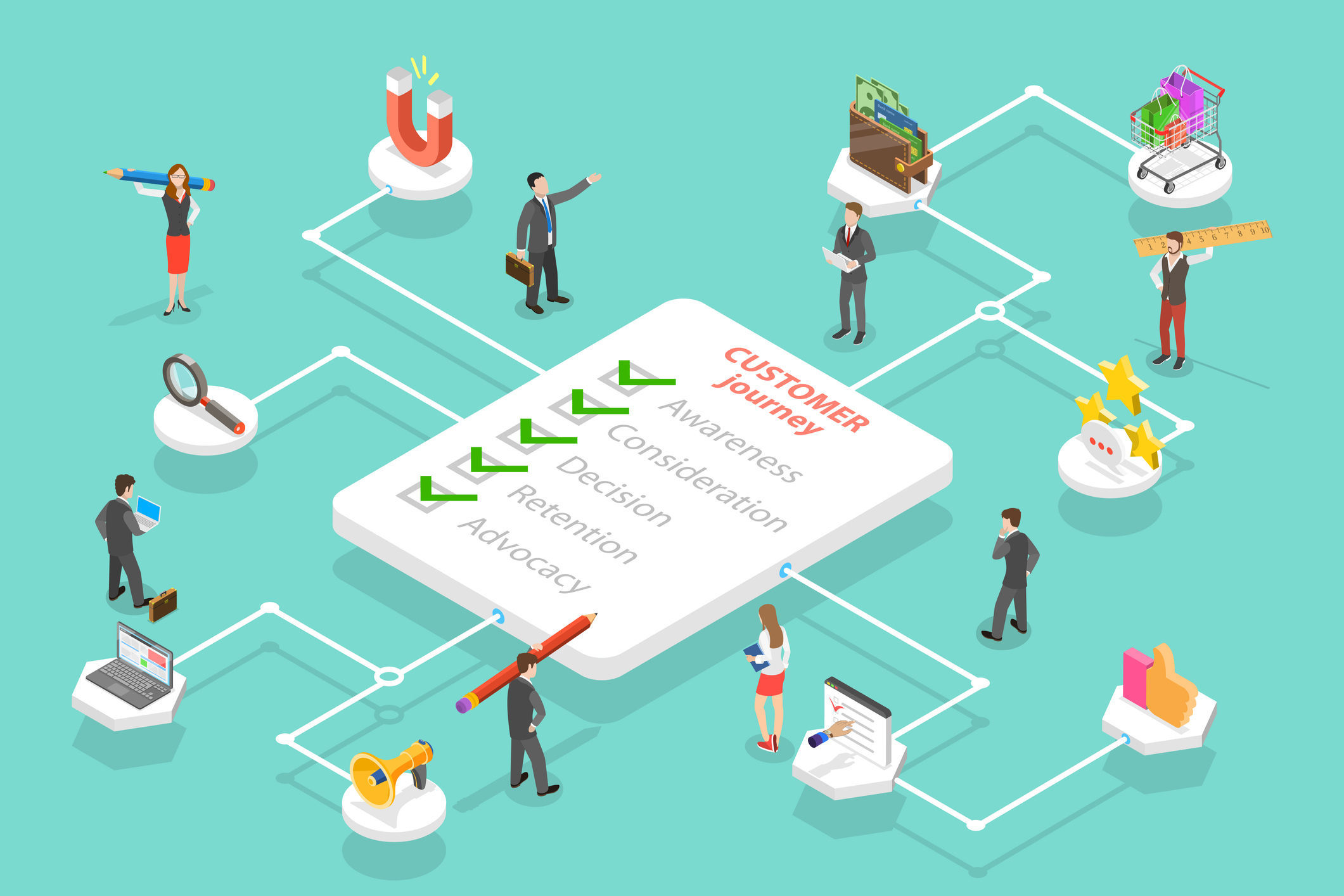The Only Guide You’ll Ever Need for Mapping Your Customer Journey
On the surface, the concept of a customer journey seems simple. You develop a product, market it, and customers eventually make a purchase. However, with the modern buying cycle dominated by the digital landscape, the customer journey is much more complex.
Now, it can be challenging to understand your customer’s motivations and actions. Today’s modern consumers communicate with brands on at least ten different channels—from social media, email, paid ads, etc.—and there are several new ways brands can provide touchpoints and interact with potential customers.
However, it’s not something you can predict or assume based on your perspective. Instead, completing customer journey mapping is the best way to understand and analyze your customer experiences with your brand. Let’s dive into how to get started.
What is a Customer Journey Map?
A customer journey map is a visual representation of your buyer’s story that showcases their experiences with your company and channels. Whether your customer interacts with your brand via social media, live chat, or email, a journey map gives you insight into their needs and pain points so you can deliver a better experience.
Customer journey mapping is the process of creating a map that outlines several key actions, events, and motivations. Designing a comprehensive map helps you visualize friction and step into your customer’s shoes to understand how they view your company.
Why You Need Customer Journey Mapping
Customer journey mapping is a strategic approach to better understanding customer preferences and implementing their needs throughout your business. 84% of customers prefer a personalized customer experience instead of feeling like just another number. As customer expectations continue to shift, a customer journey map will allow you to meet their needs with an omnichannel approach through marketing, sales, and customer service.
Additional benefits of customer journey mapping include:
- Break down your touchpoints stage-by-stage
- Optimize the user onboarding and customer service experience
- Benchmark the current customer experience versus what you currently provide
- Understand the differences between your buyer personas and attract a new customer base
- Analyze experience gaps and improve your current process flow
- Quicken the selling cycle through prospect to conversion
5 Customer Journey Mapping Steps to Amplify Your Brand
81% of marketers believe customer service is a huge competitive advantage. Your marketing, sales, and customer service strategy should always be customer-focused. After all, everything you do should provide your customers value and help them achieve long-term success with your brand. Build an accurate customer journey map with the following steps to amplify conversions and engagement:
1. Build Buyer Personas and Highlight Goals
Once you decide to develop a customer map, you’ll need to conduct both qualitative and quantitative market research to understand your user’s needs. You’ll want to collect feedback from people who have interacted with your brand in the past or plan to in the future. You can collect your research by:
- Surveys
- Interviews
- Social listening
- Focus groups
Based on the research you receive, you can develop robust buyer personas based on your ideal customer’s psychographics and demographics. Your buyer personas will help guide your entire map and journey touchpoints.
2. Determine Your Touchpoints
Your channel touchpoints are all the platforms that your customers interact with your brand. Thinking through all possible touchpoints will allow you to understand your customer’s actions and next steps. If you notice fewer touchpoints, it could mean that you’re not interacting with users enough, and they’re turning away. Too many touches, and you could be overwhelming customers before they’re ready to make a purchase.
Regardless of the final analysis, touchpoints will help you understand the full scope of the customer experience. Your touchpoints may include:
- Social channels
- Email marketing
- Website
- Live chat
- Paid advertising
- Third-party review sites
- Public relations
3. List Your Customer’s Actions and Motivations
Once your touchpoints are listed out, you’ll need to consider all of the actions your customers perform throughout their customer journey. If customers are taking too many actions to achieve a goal, it’s important to reduce that number to create a more seamless customer experience.
Additionally, you need to consider the emotions and motivations that drive your customers to take action. Since pain points typically drive emotions, knowing when you can offer the right content to ease their journey is paramount to increasing conversions.
4. Identify Important Elements to Showcase in Your Map
When creating the map, you’ll want to consider how to properly display the journey to convey your brand’s goals and experience. There are four types of journey maps to design:
- Current state: Depict the thoughts, actions, and emotions of customers currently interacting with your brand.
- Day in the life: Highlight all the actions, thoughts, and emotions your customers have throughout the day, with and without your brand.
- Future state: Visualize what you believe your customer’s actions, thoughts, and emotions will be in the future.
- Service blueprint: Deliver a simplified version of all the maps, but show the factors responsible.
5. Analyze Gaps and Improvements
After you’ve designed your map and distributed it throughout various departments, you need to analyze the results to highlight where gaps still exist. Analysis helps you provide an exceptional experience throughout the entire buying cycle and position your brand as the solution to users’ problems.
To get started, put yourself in the shoes of each buyer persona and take the journey yourself. How can you support your customers better? Where do they still have unanswered questions? Whether the adjustments are big or small, they will significantly improve the customer experience and enhance your brand’s engagement.
Grow Your Business with Customer Journey Mapping
Customer journey mapping is a critical part of your overall business growth and longevity. When you understand your customer’s pain points and actions, you’ll be more equipped to meet their needs and deliver an experience that persuades them to convert.
Discover how Televerde provides an end-to-end sales and marketing solution to help your brand grow.


